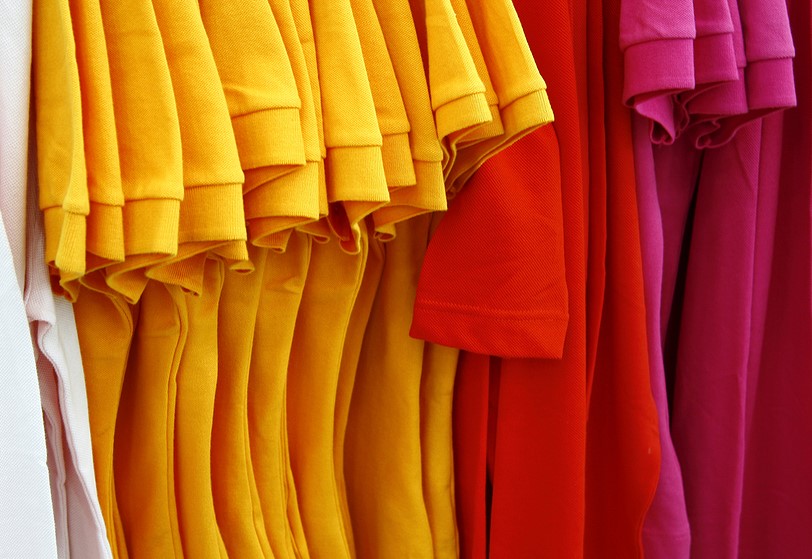News
How Can Fashion Brands Prepare For Water Stress?
As an industry, textiles is one of the biggest in the world, contributing significant amounts to the global economy and supporting the livelihoods of millions of people, with clothing representing the majority of total textile production.
This is expected to continue well into the future, in large part because of the rise of fast fashion, which sees a huge number of different collections and clothing lines launched each year.
It’s estimated that each of these fast fashion brands actually produce 52 microcollections annually, with these items of clothing only worn a few times before they find their way into landfill.
Of course, clothes are a necessity and this is something that can’t be ignored, but neither can the growing water crisis around the world… and this is something that fashion brands of all sizes, big and small alike, will need to start taking more seriously as time goes on if they’re to produce their wares in a sustainable way.
Fashion’s water footprint
As we all know, life cannot be sustained without water, but resources are now being put under significant pressure because of climate change, globalisation, pollution, water mismanagement, population increase and industry usage.
Fashion, in particular, has a hefty water footprint, using it for irrigation of cotton crops to the manufacturing of the clothes themselves and domestic washing by the end user. Textile dyeing also leads to water pollution, so both water quality and water quantity alike are negatively affected by the industry.
To put the sector’s usage and consumption into perspective, it takes an impressive 10,000 litres of water to produce just a single kilogramme of cotton.
Recent research from Gap found that it takes 7,520 litres to produce a pair of jeans, 3,350 litres to produce a hoodie or sweatshirt, 1,500 litres to make one shirt and 850 litres to produce a pair of pants or boxer shorts.
It’s not just about the amount of water used, however, and it’s an acknowledged fact that textile production releases significant volumes of water that contain hazardous chemicals back into the natural environment, thanks to dyeing and treatment processes.
Plastic-based textiles like nylon, acrylic and polyester are also being used increasingly for clothing, which has led to mounting concerns about the amounts of microplastics making their way into oceans around the world when these materials are washed.
Because clothing demand shows no signs of stopping and, in fact, it’s projected to reach some 160 million tonnes come the year 2050, it is now paramount that those in the industry take steps to operate more sustainably where water and the environment at large are concerned.
How can fashion brands reduce their water footprint?
While it’s becoming increasingly urgent for fashion houses the world over to improve their water stewardship from an environmental perspective, it’s also worth noting that it makes good business sense, as well.
New research from non-profit organisation Planet Tracker has found that there are only a few brands out there that are currently adequately prepared for water stress-related problems, issues that are only going to get worse in the future.
Reported on by GreenBiz, the study looked at the warm weather that was seen in 2022, which put so much stress on water supplies that cotton prices soared by 30 per cent globally as a result. Just a one per cent hike in costs related to costs would deliver a three per cent drop in operating profit for any typical fashion brand.
Off the back of these findings, the thinktank is now calling on companies to view water as a potential material risk to profits and revenues, urging them to disclose the relevant water impacts accordingly to ensure that water is managed in a regenerative way.
Interestingly, Planet Tracker also went so far as to advise lenders and investors to reduce their exposure to the fashion industry unless brands take action to address the risks that dwindling water supplies pose to their global operations.
If this recommendation is acted upon, it could certainly force the hand of businesses to start taking the water crisis more seriously from an operational perspective, if not from an environmental one.
Advice for brands from Planet Tracker includes addressing the water risk impacts for direct and indirect operations, as well as collecting data to implement targets that reduce the risks and minimise the impacts, using the framework of the Science-Based Targets programme.
Furthermore, financial strength could also be leveraged to support suppliers in the transition to more sustainable usage of water. Doing so, however, could mean that compromises are necessary on demand for high volumes at low prices and tight margins.
Other steps that companies can take include ensuring that all cotton used in clothing manufacture is sustainably produced and organic (which will significantly reduce the amount of pollution entering waterways).
They could also ensure that they partner with production sites that recycle and reuse processing effluent water, while striving to reduce the amount of water used during the dyeing and manufacturing processes.
Action such as this will certainly help to improve your business’s reputation in the eyes of consumers, who are becoming increasingly critical of brands that don’t prioritise environmental improvements.
It’s likely that if you don’t start operating more sustainably, you’ll eventually see your customers more interested in what your greener competitors are doing, so, again, there’s an excellent business case to be made for making eco-friendly policies one of your core values.
The first step to take is to address how your direct operations use and consume water. A water audit can be carried out across your assets to calculate what your water footprint is, allowing you to identify areas ripe for improvement and introduce the most appropriate water-saving measures as a result.
If you’d like to find out more, get in touch with the H2o Building Services team today to see how we can help.
